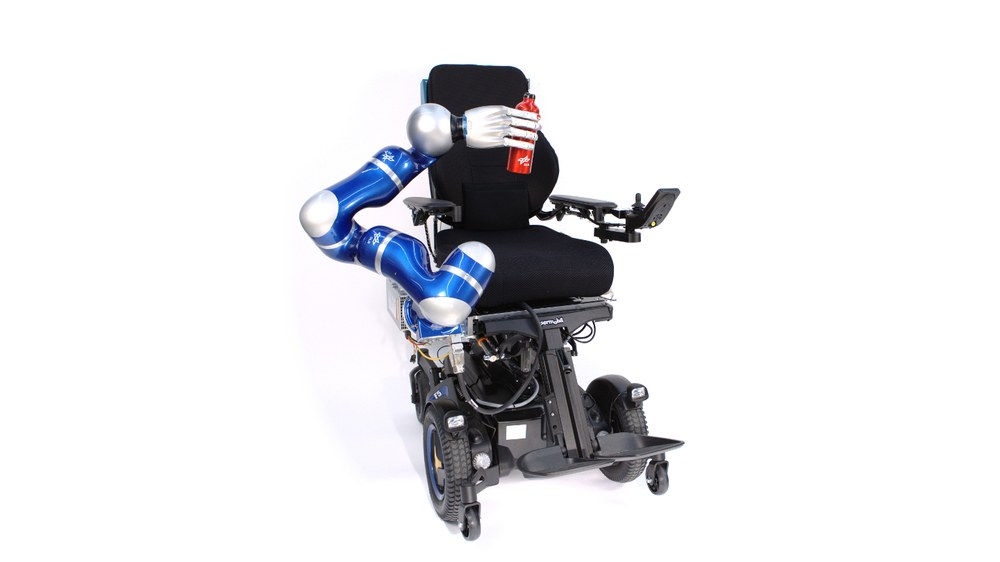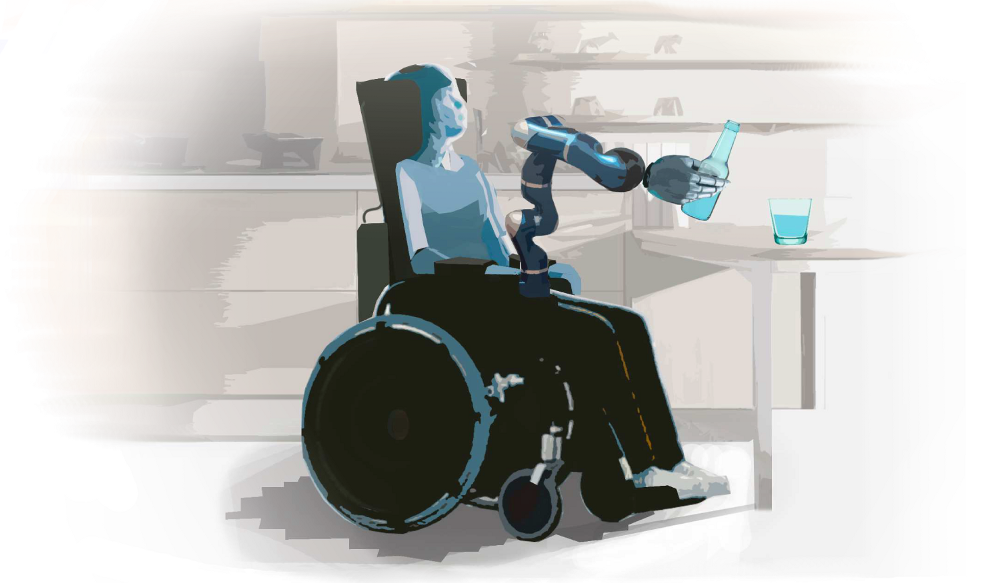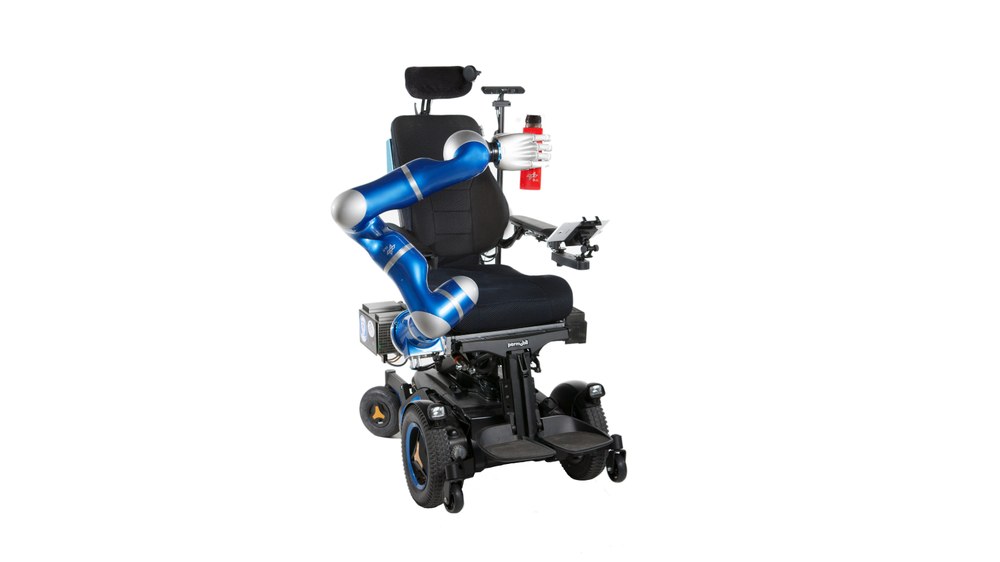EDAN
The mobile robot EDAN (EMG-controlled daily assistant) is an assistive robotics system for people with severe motor impairments. The robot is controlled using muscle signals. Its integrated shared-autonomy capabilities facilitate everyday tasks such as drinking from a glass.
In 2016, EDAN was presented to the public for the first time.
Technical Data
Size: | 1,1 m × 1,1 m × 1,6 m |
Weight: | 220 kg |
Degrees of freedom: | 28 (arm: 7, hand: 15, wheel chair: 2, chair: 4) |
Nominal payload: | 120 kg |
Energy supply: | Battery with up to 6 h operating time |
Speed: | 1,6 m/s or 5,8 km/h |
Working space: | Comparable to that of a human |
Features: |
|
System description
EDAN is a robotic research platform for people with severe motor impairments. The sensitive lightweight robot arm and the five-finger hand ensure safety for the user and allow a wide range of interactions with the environment. Instead of the usual joystick, muscle signals are measured on the skin surface (EMG) and subsequently processed to generate motion commands for the robot. Even in cases of advanced muscular atrophy, individual muscle signals are often measurable, making the use of EDAN possible. To make use of the robot as easy as possible, so-called shared-control techniques are implemented. The robot uses its knowledge of the world to predict the intentions of the user and to assist accordingly in the execution of the task. If, for example, the robot detects that the intention is to grasp a glass for drinking, the motion commands decoded from the EMG-signals are adapted to guide the hand securely to the glass and to grasp it.
A video illustrating EDAN is available on YouTube.



Selected publications
- Vogel et al., "An assistive decision-and-control architecture for force-sensitive hand–arm systems driven by human–machine interfaces", The International Journal of Robotics Research (IJRR), vol. 34, no. 6, pp. 763-780, May 2015.
- Vogel et al., "Continuous robot control using surface electromyography of atrophic muscles", in Proc. of the 2013 IEEE/RSJ International Conference on Intelligent Robots and Systems (IROS), Tokyo, Japan, pp. 845-850, November 2013.
- Hochberg et al., "Reach and grasp by people with tetraplegia using a neurally controlled robotic arm", Nature, vol. 485, pp. 372-375, May 2012.

